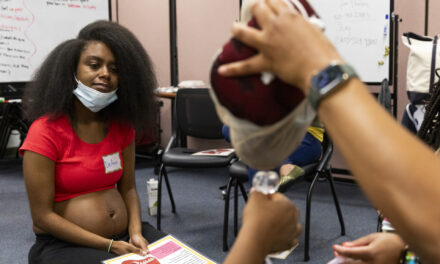
My heart leaps up when I behold
A rainbow in the sky:
So was it when my life began;
So is it now I am a man;
So be it when I shall grow old,
Or let me die!
The Child is father of the Man;
And I could wish my days to be
Bound each to each by natural piety.
In “My Heart Leaps Up,” poet William Wordsworth portrays his childhood joy at observing a rainbow, concluding that he hopes to retain that childlike wonder until he dies. While childlike wonder is a good thing, parentification, adultification and infantilization, by contrast, may occur during the pendency of a divorce, a modification case, or in cases involving Child Protective Services, and may not be good things.
Each of these theories may impact on a child’s natural development, yet not one is found in the DSM-5-TR. We address such issues, and how they may impact not only on family law matters, but on a child’s relationship with other family members, and in their own partnerships in adulthood.
There may not be visible, explicit trauma, but, just like an ultraviolet light will kill certain bacteria and viruses, parentification, adultification, and infantilization can dampen a young person’s healthy childhood. Veering away from any politicalization, the term “parentification” has been used to explain a child’s premature acceptance of responsibilities for their parents, and within the family dynamic, of younger siblings. Nancy D. Chase notes that parentification “entails a functional and/or emotional role reversal in which the child sacrifices his or her own needs for attention, comfort and guidance in order to accommodate and care for logistical and/or emotional needs of the parent.”
There is considerable confusion between the terms adultification and parentification. Asking a 16- or 17-year-old to take responsibility by maintaining good grades, getting a job to help pay for gas and car insurance, and acting appropriately constitutes good parenting. Asking a child to help with chores is not parentification. When a parent needs help during short periods of illness or disability, or when a parent needs help with minor household repairs or upkeep, such requests are appropriate and can assist with the child’s self-esteem and self-image, building the child’s reliability and responsibility. Such growth is important as the child matures into early adulthood.
Benjamin D. Garber, Ph.D. opines: “Adultification occurs when a parent prematurely enlists a child as an ally, peer, friend, or ‘emotional partner.’” (p. 103). There are times that adultification can be a good thing. To determine whether a child has been adultified is based on a number of factors, including:
- The child’s age at the time the adultification is noted;
- The family’s history of healthy interaction, if any;
- Birth order;
- The history of conflict between the child’s parents, and of the child’s exposure to such conflict of personalities;
- The duration of the exposure to conflict. (p. 104)
The corruption of a child’s normal role in the family unit can increase the child’s risk of dysfunction—socially and emotionally—when the child attains adulthood. When a parent begins to rely on the child for emotional support, especially in times of conflict within the family, and the parent comes to depend on the child for emotional support and protection, then the situation has become problematic and may be characterized as parentification.
While Dr. Garber notes that the terms “parentification” and “adultification” are often used interchangeably, he perceives the term “parentification” to pertain to a notable reversal of the parent/child relationship. The child becomes the parent; the parent acts like a child, relying on the child for a variety of items more often attributed to doing things that a parent would do. Dr. Garber references the case of Mayo v. Mayo in which the North Dakota Supreme Court held that:
. . .parentification results in ‘pseudo-maturity,’ characterized by children acting very responsible and trying very hard to be good caretakers…The parentification manifests itself in adulthood in one of two extreme ways. The first is codependency, which results when parentified children try to compensate for the lack of nurturing they received as children. The second is continuing the self-sacrificing role of the caretaker at the expense of the reversal. (p. 106).
Parentification may be observed in high conflict cases when a parent may “enlist” a child in that parent’s war against the other parent. When the child becomes the mouthpiece for the parent, the child’s needs fall secondary to the parent’s demands for assistance in engaging with the other parent.
During the 20th century, social scientists began to use the term infantilization to refer to “the ways in which treating humans as helpless can prolong or encourage their dependency on others.”
A parent who was very dependent on their former spouse is likely to seek support initially from extended family and friends. However, those children often grow tired of being pulled into the fray, and return to their own lives. This scarcity of support—albeit self-inflicted—leaves the parent with only one resource: the child. Transferring their dependence and reliance to the child means that the child must turn their attention from their own peer group relationships to attending to and protecting the parent. The result? The child is set up to fight the other parent in place of the parent they must protect.
In a study of 19 women, each of whom perceived that she experienced parentification in their respective childhoods, authors Shirley Schorr and Limor Goldner conclude that “parentification can be considered a form of emotional abuse and neglect.” Schorr and Goldner assert that there is a difference between parentification that is adaptive, or moderate, and parentification that is unhealthy or morbid. Setting appropriate boundaries is an appropriate part of the parent-child relationship. Sometimes, though, parents rely on their children too much, resulting in “pathological parentification.” How do the parent-child boundaries become so challenged as to result in a pathological result? It occurs when “parents turn to their children for concrete instrumental help with housekeeping chores or for emotional nurturance, support, comfort and closeness.”
Parentification is not all bad. For instance, suppose a mother relies on her 9-year-old child to change the mother’s dressing for an abdominal infection that is draining. Such a request can play upon the child’s natural curiosity and caretaking ability, enhancing the child’s empathy for others who are experiencing an illness or some type of physical issue. The child may have to endure not only their parent’s pain, but learn how to maintain their parent’s hygiene in order to keep the wound clean, and learn coping skills in the face of the parent’s illness. Pathological parentification is “characterized by poor parental care, which is manifested by placing exaggerated, overburdening, long-lasting emotional responsibility, and instrumental caregiving on the child, which the child perceives as an intolerably heavy burden and unfair.” (Schorr, p. 2).
What is at the core of whether a relationship is termed healthy or unhealthy? Attachment theory. As Schorr and Goldner note:
Even though individuals who were parentified as children often maintain their positions as caregivers in adult relationships, these individuals are inclined to compensate for their childhood losses by turning to their own children for their own nurturance, narcissistic, and relationship needs. (Schorr, p. 3).
In the context of family litigation, judges, ad litems, attorneys, child custody evaluators, and jurors, must ask themselves whether the burdens placed on children are appropriate, or break through inappropriate boundaries. An obvious example: A child who is abused sexually, and told that they must keep their parent’s incest a secret, will suffer a painful experience, one that can color the child’s adult interactions and their ability to parent and trust a partner in the future.
In Schorr and Goldner’s research, they found two recurring themes: “the participants’ external reality, and the second relates to internal factors.” (p. 6).
External factors leading to parentification include:
- Lack of parental competence;
- Mental or physical disabilities for the parent;
- A parent’s loneliness;
- A parent presenting as being child-like and in need of protection;
- On-going exposure to physical and/or emotional abuse between the child’s parents or other family members;
- Economic hardships;
- Displacement – being forced out of a long-term relationship or living arrangement;
- A parent imposing duties befitting an adult rather than a child, due to the parent’s inability to provide for the home; and
- Death of a parent.
Internal factors leading to parentification include:
- Blurring psychological boundaries;
- Taking on nurturing roles to assure a parent’s stability;
- Speaking in adult language;
- Triangulation in an attempt to preserve the familial unit;
- Being psychologically manipulated, such as vying for status as the favorite child;
- Overt or covert acts of aggression or abuse of the child, of a parent, or of a child’s siblings;
- Neglect in the forms of alienation, rejection, denial of physical and/or emotional love;
- Merging and enmeshment, or “parental expropriation of the self as of an early age.” (pp. 6-8).
Think of a child who is having to cope with a fragile parent, e.g., a parent who has been diagnosed as bi-polar. In the event of a divorce, or in a subsequent suit to modify the parent child relationship, the fragile parent can feel threatened. Such a child is so busy taking care of their needy parent in light of a threat to the family’s stability, the child chooses to refrain from expressing their own feelings, to assure that the child does not hurt their needy parent’s feelings. Such a child could view their own environment as threatening, questioning their own self-worth. Children who have suffered from parentification often find themselves in need of acting as their own parent in order to cope with any feelings of vulnerability or insecurity. Children may be left to raise themselves. Think of CPS cases where the parents involved have children from numerous relationships, are addicts, suffer from mental health disorders, and engage in self-medication in lieu of adhering to treatment protocols. Parentification in such a context may lead to the perpetuation of social and economic stratification. Those who have suffered abuse often repeat the abuse, absent significant counseling and modeling of other, healthy behaviors.
One would hope that questions about parentification, adultification and infantilization are a standard part of a child custody evaluation. Is a child asked to shop for food or clothing for the rest of the family unit? Is the child forced to work on the family budget, or to work simply to meet the family’s economic needs? Will parentification, adultification and/or infantilization lead to issues for such individuals as they enter adolescence and adulthood? As Sara Tomek and her colleagues noted, we have yet to determine if “parentification and infantilization are separate constructs or rather two extremes of the same dimension.”
They also observed that if parentification is present in a given case, family therapists must consider certain items in working with families where such dysfunction is present, including:
- Is the behavior “culturally sanctioned and consonant with family values”;
- Digging deep to ascertain if parentification is occurring, particularly with children who are “reluctant to disclose – or underreport”;
- Whether outcomes are “immediate” or “emerge over time”; and
- Whether there is any ability to reframe the parentification in “a positive, culturally relevant family system by helping parents to perform their parental roles and responsibilities to their children, crossing generational boundaries with their children,” as well as “compelling age-inappropriate activities among their children.” (pp. 12-13).
How do mental health and family law professionals assess for parentification, adultification or infantilization? It is no simple matter to measure subtle undertones of emotion. Often, tests that can be included in a child custody evaluation are subject to criticism as not being sufficiently reliable or valid – yet reliability and validity are essential when a Daubert challenge is raised. Forensic testing is essential, along with home visits and interviews of each parent, review of collateral documentation. As Bill Eddy writes in Splitting:
The best defense against … a postdivorce battle is to continue to keep records on parenting behavior and to have other people witness that the child is doing well with you. . . try to provide as much stability as possible for the children and your ex-partner. Ease them into changes…Outside court, it is very important to find a stable balance in relating to your former partner: Avoid being too close or too rejecting. (pp. 272-274).
Children may be the recipients of a quiet tsunami of well-intended, but nonetheless inappropriate expectations cast upon them. The parent who uses a child as a shield is manifesting high levels of dependency and emotional immaturity. Without an intervention to move out of the parentified position, the child becomes enmeshed in their parents’ battle; absent understanding, the other parent may lose their relationship with the child. Attorneys, evaluators, children’s advocates, and judges must use child custody evaluations and their own observations in assessing whether a party to a case has engaged in parentification, infantilization and adultification.
Elisa Reiter is Board Certified in Family Law and in Child Welfare Law by the Texas Board of Legal Specialization. She has served as an Adjunct Professor at SMU. Mrs. Reiter is a Senior Attorney with Underwood Perkins, P.C. in Dallas, Texas. She is also admitted to practice in the District of Columbia, Massachusetts and New York. Contact: [email protected].
Daniel Pollack, MSW, JD is a professor at Yeshiva University’s School of Social Work in New York City. He was also a Commissioner of Game Over: Commission to Protect Youth Athletes, an independent blue-ribbon commission created to examine the institutional responses to sexual grooming and abuse by former USA Gymnastics physician Larry Nassar. Contact: [email protected].
Jeffrey C. Siegel, Ph.D., ABPP is a forensic and clinical psychologist in Dallas, Texas. In practice since 1981, he has been conducting child custody evaluations for over 40 years in multiple states and has provided court testimony over 300 times. He is board certified in Clinical Psychology and Family Psychology through the American Board of Professional Psychology and is a Fellow of the American College of Forensic Psychology. Contact: [email protected].




